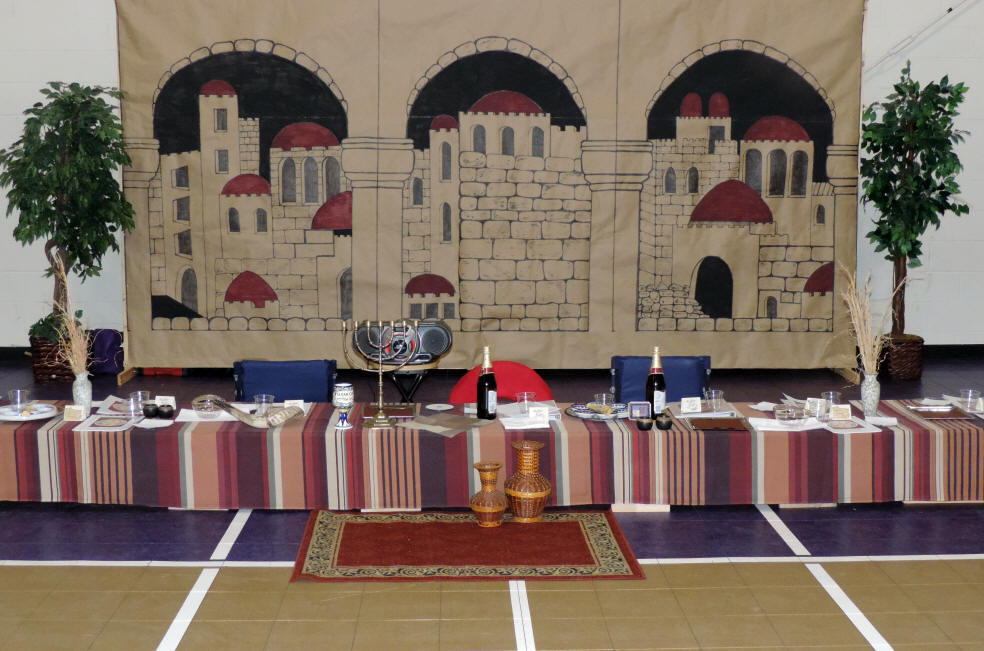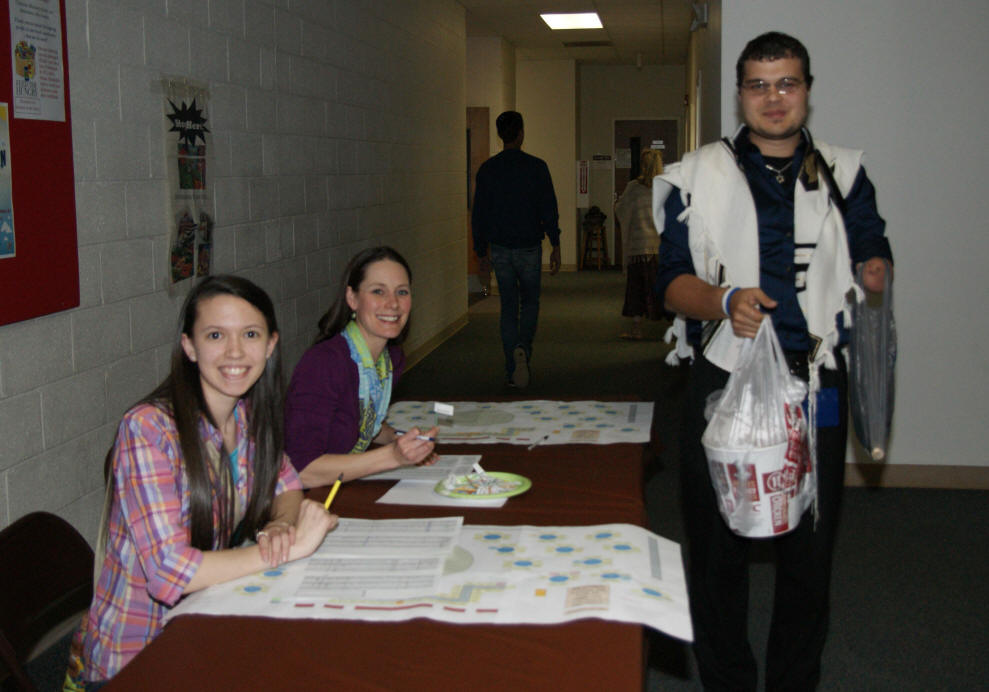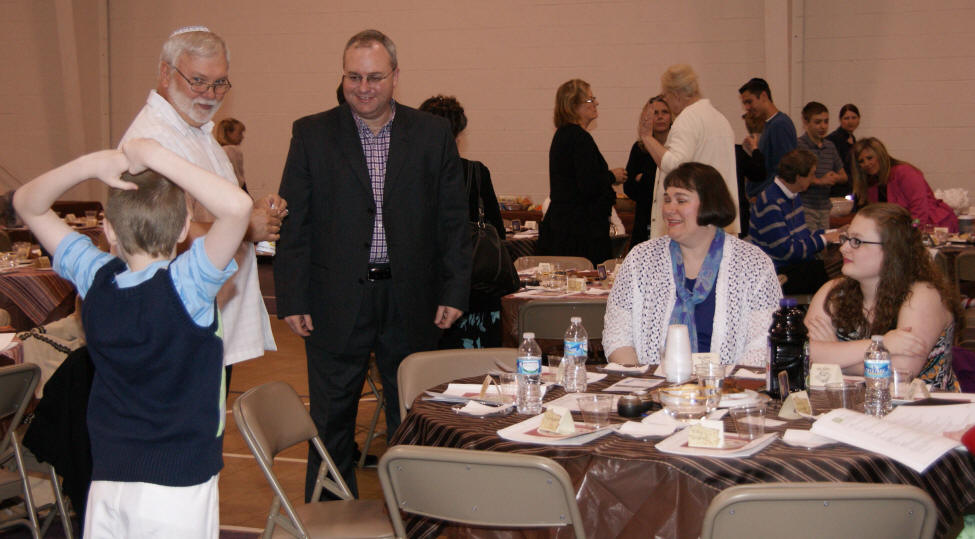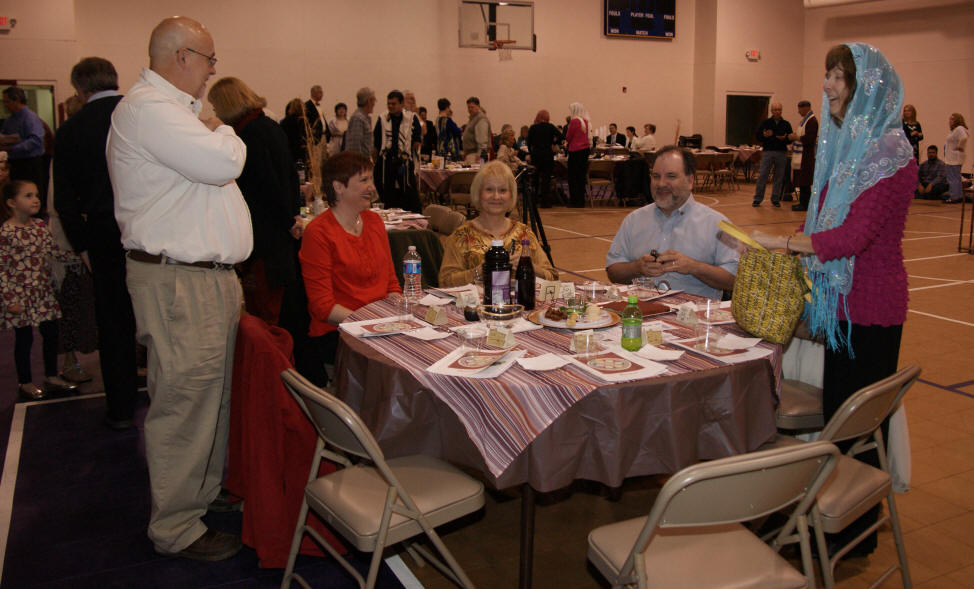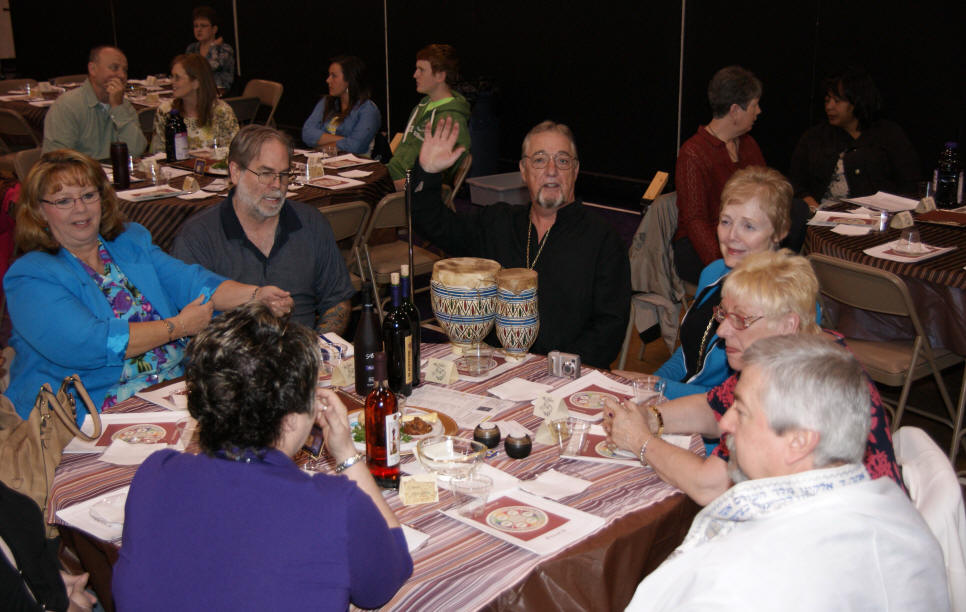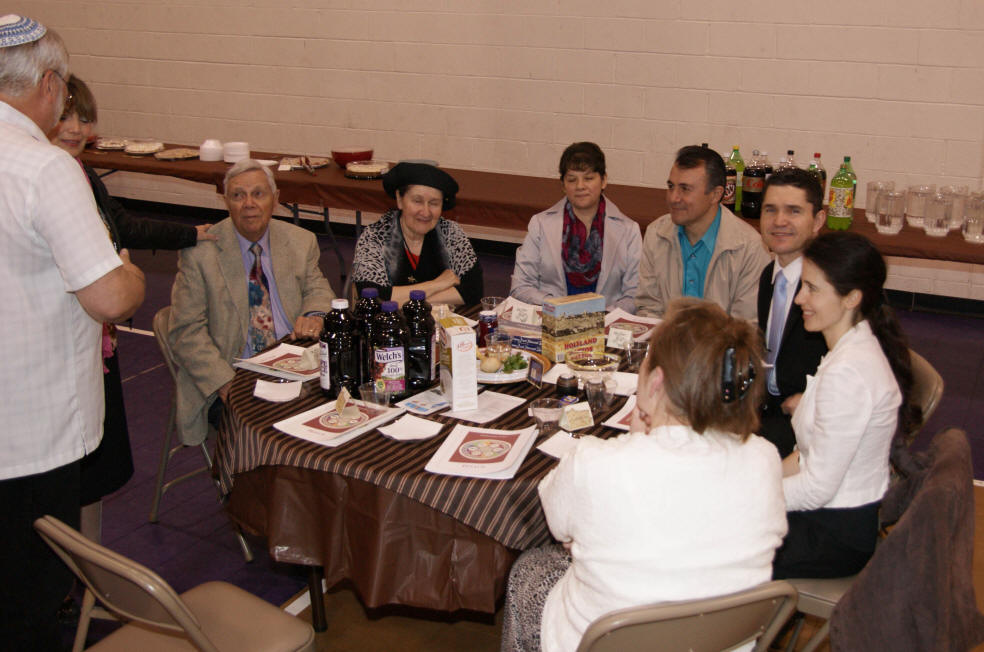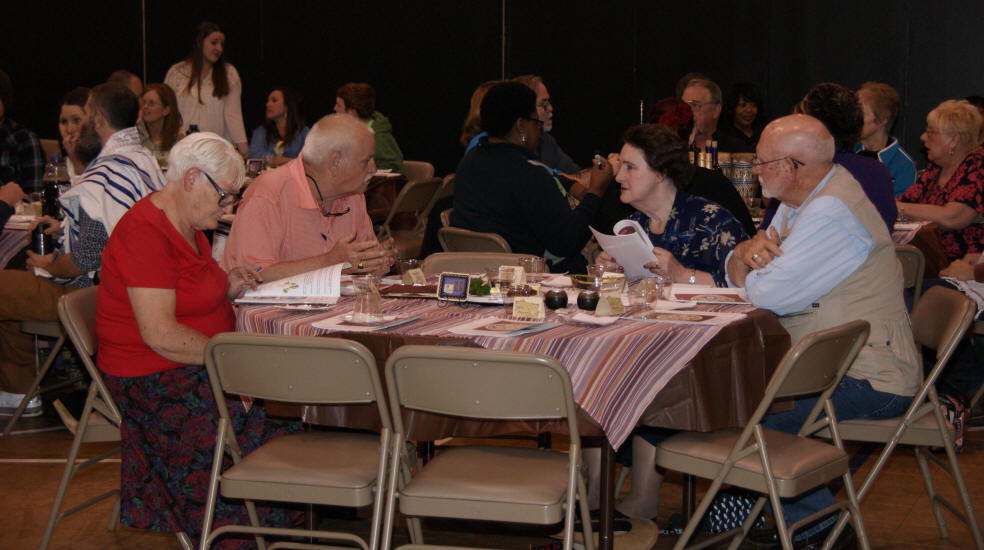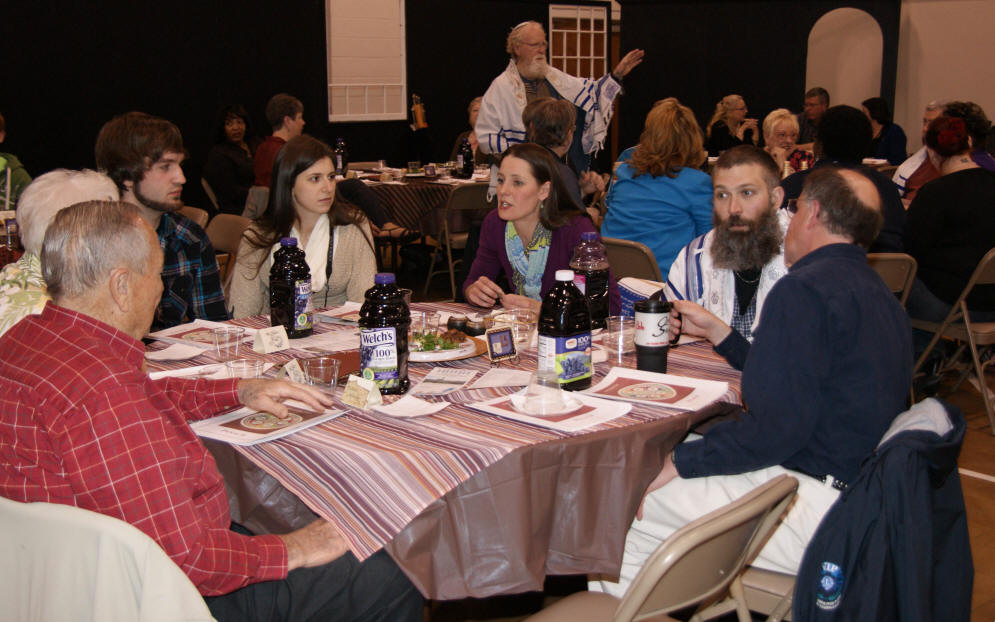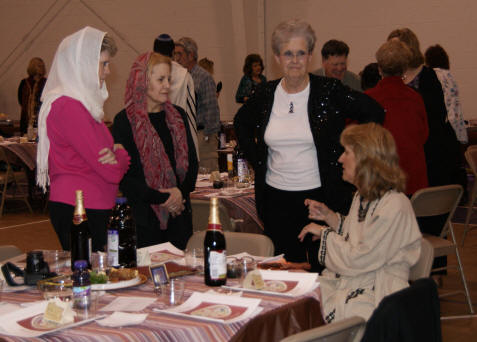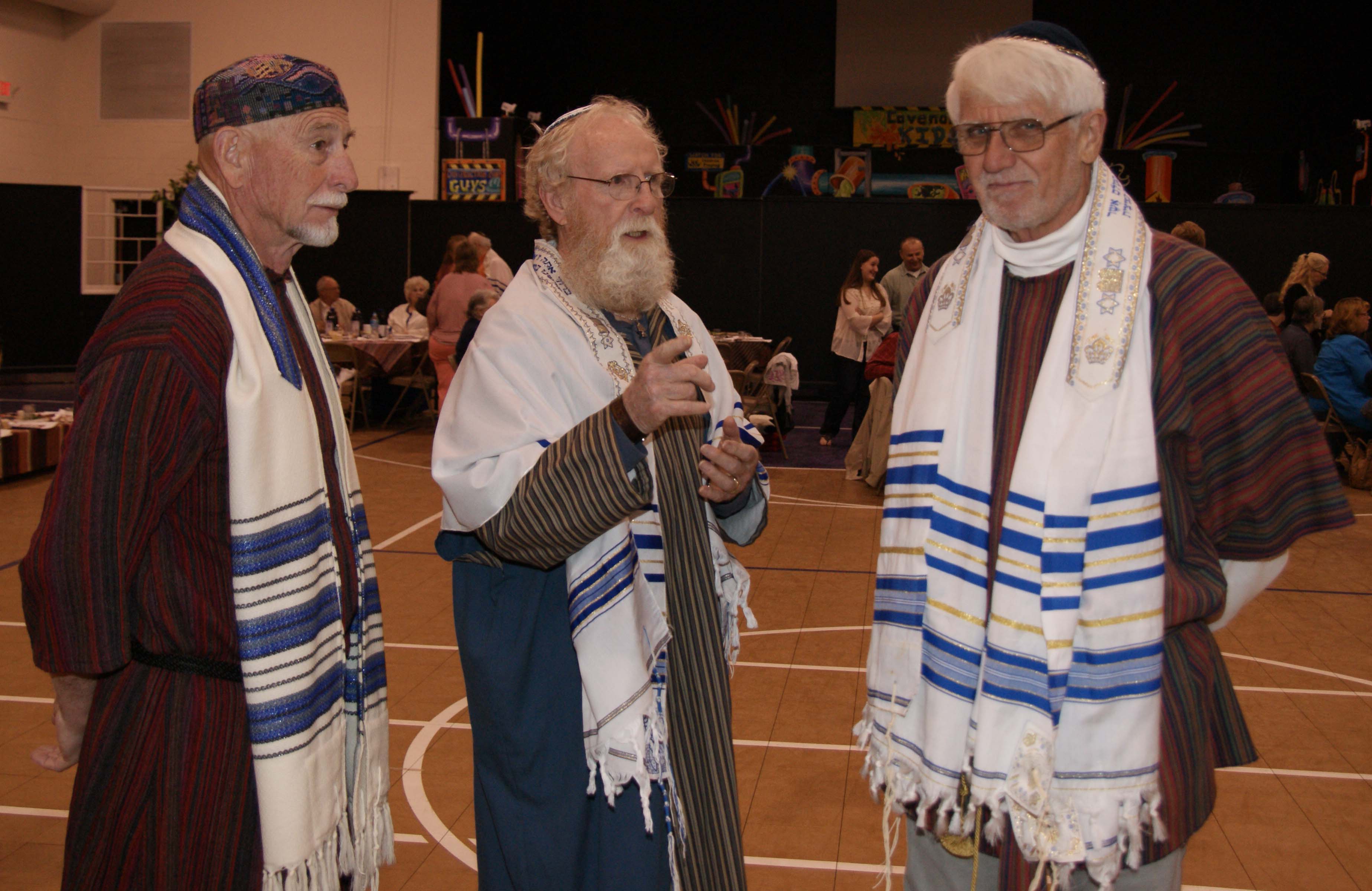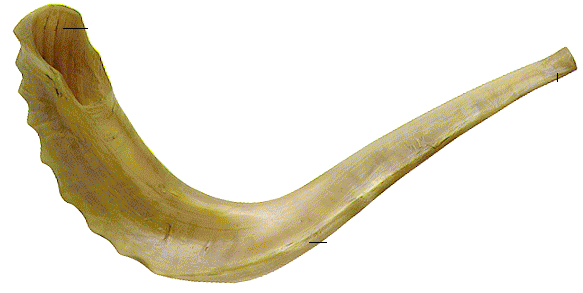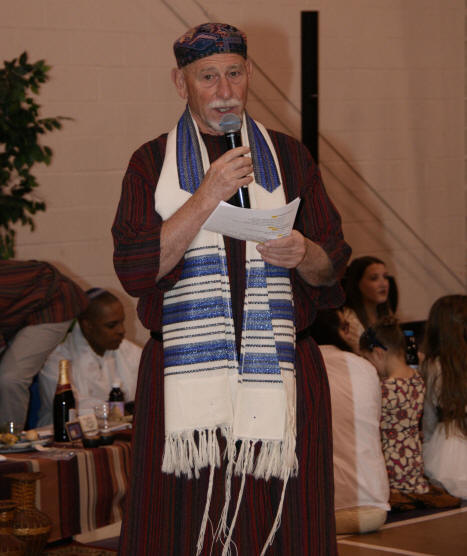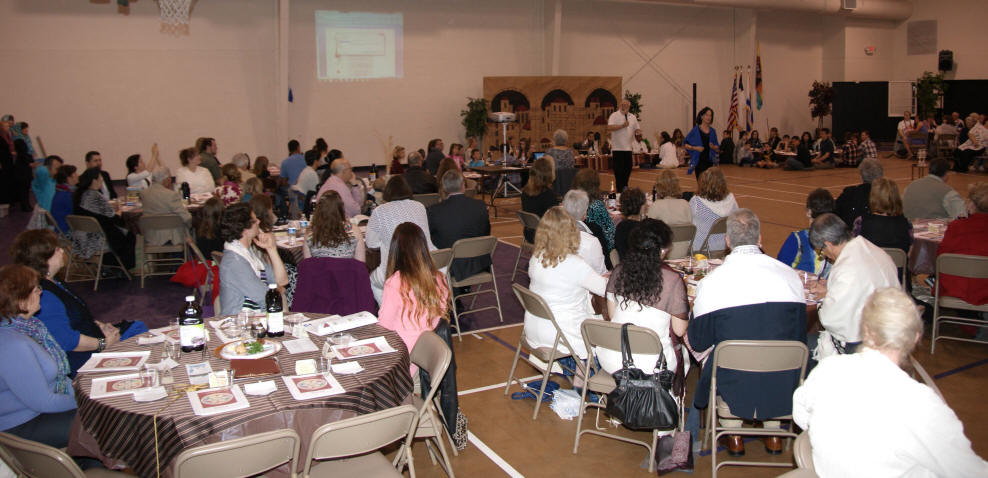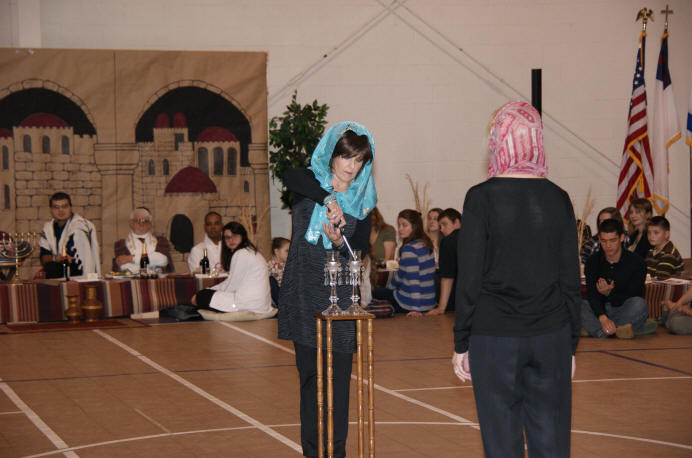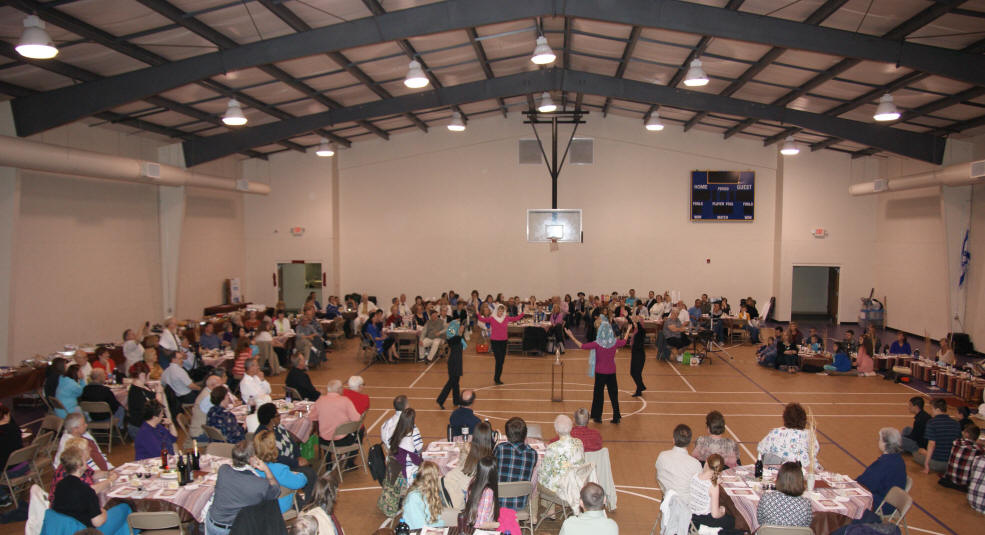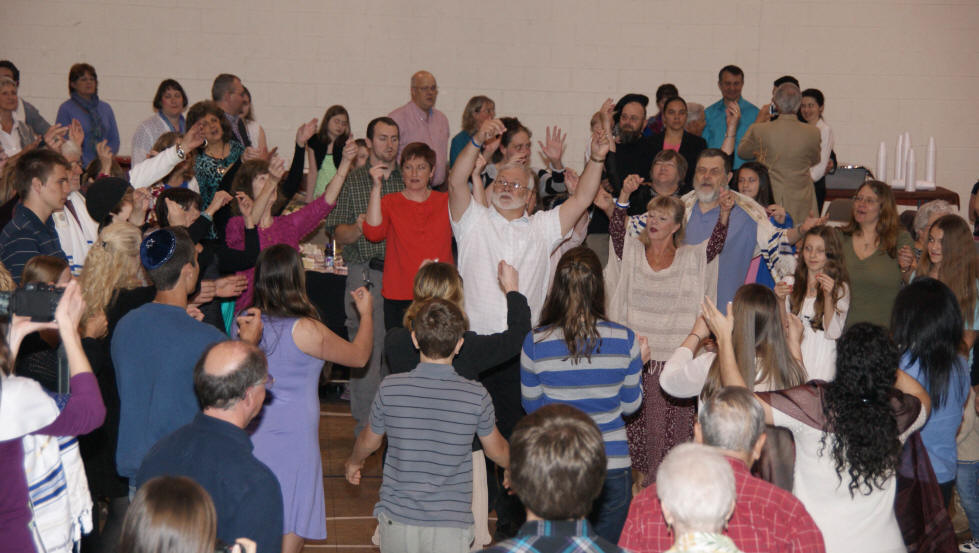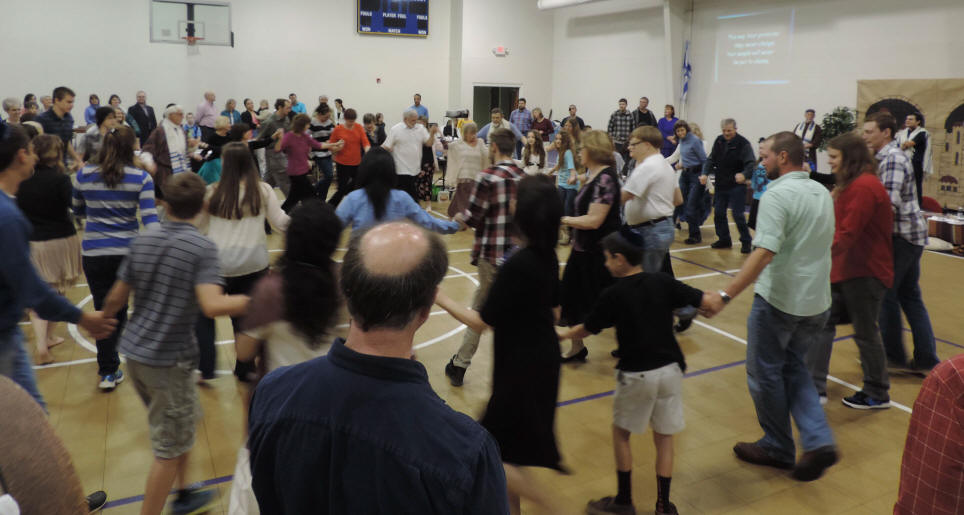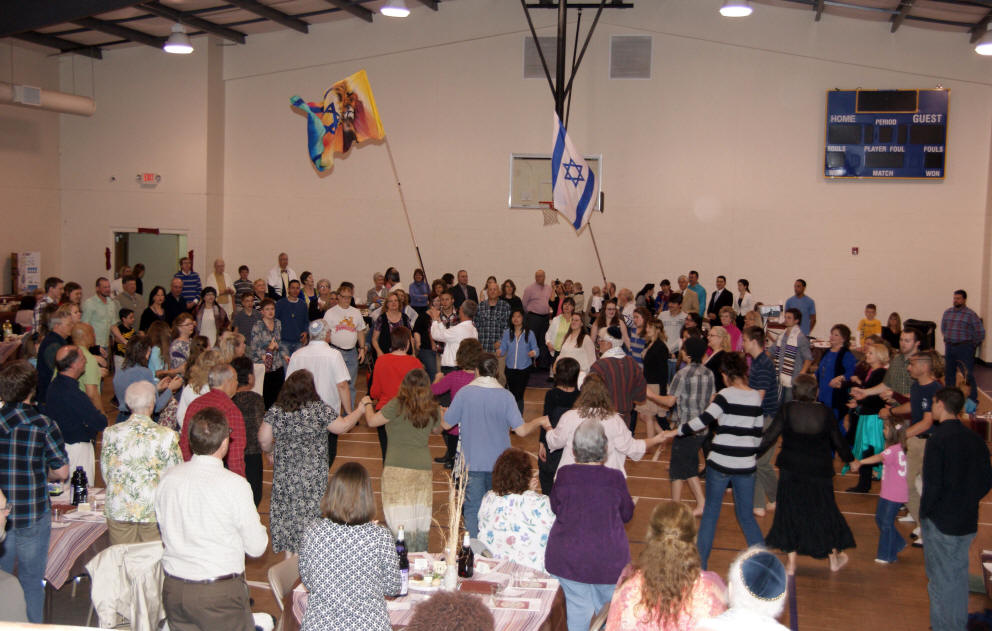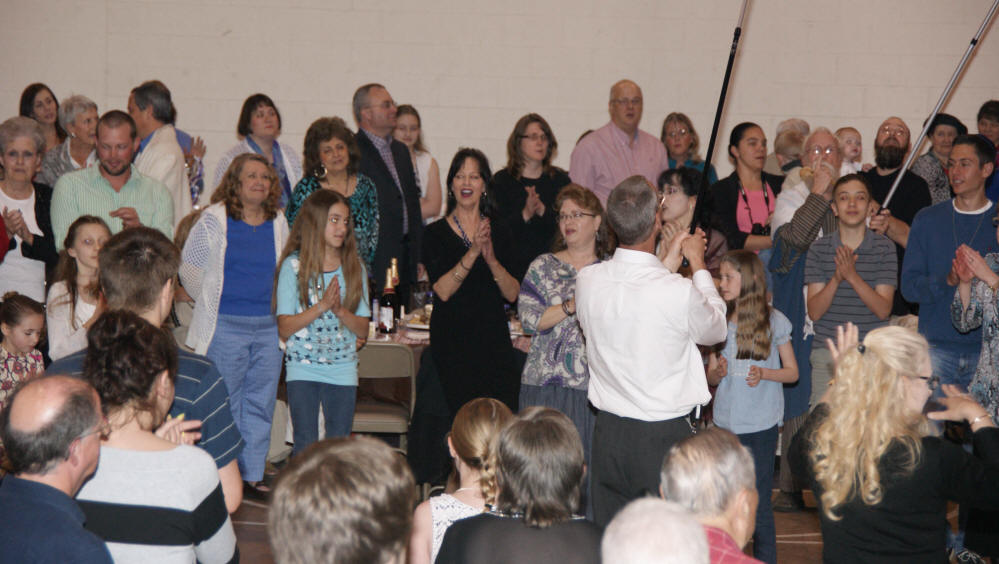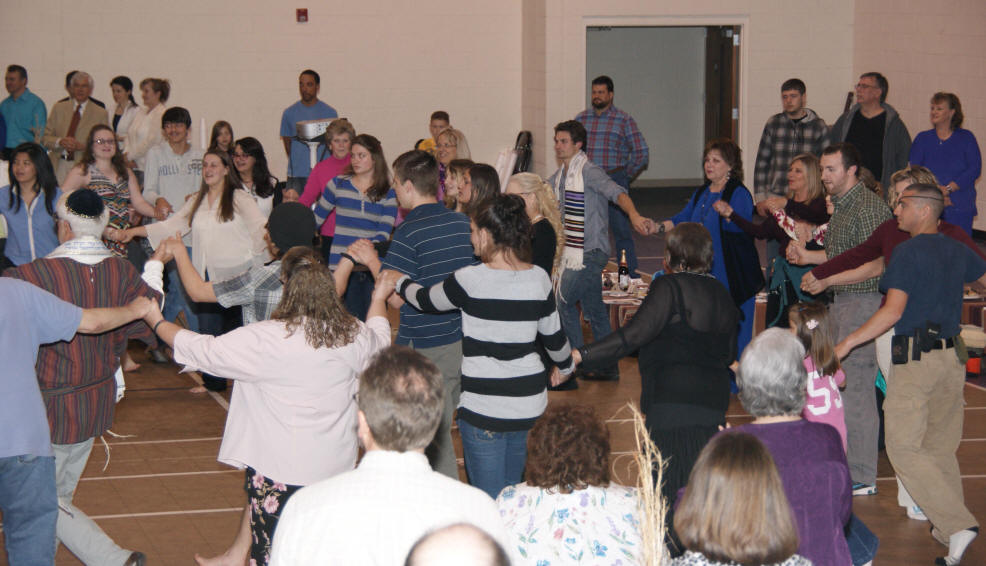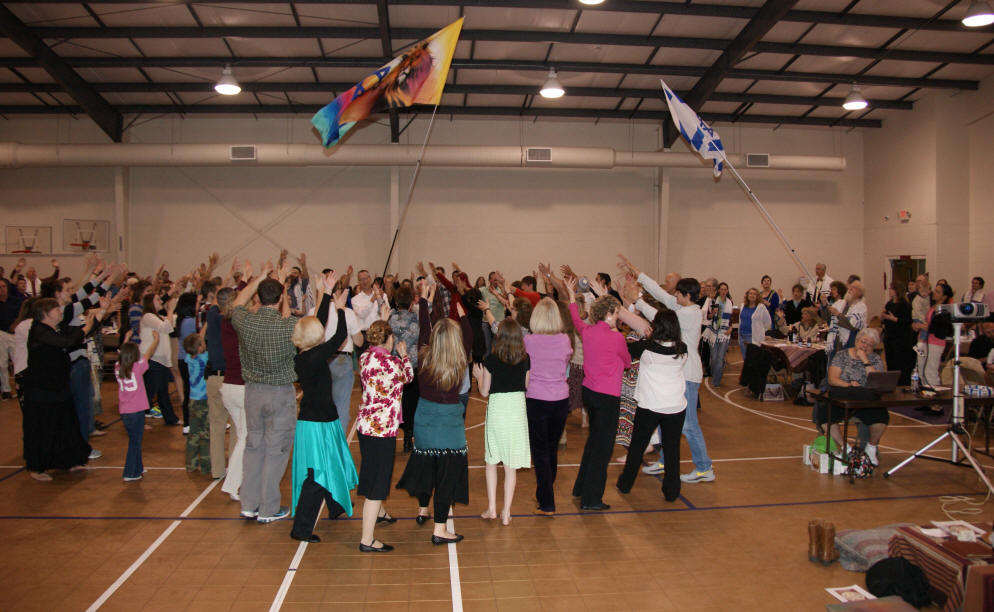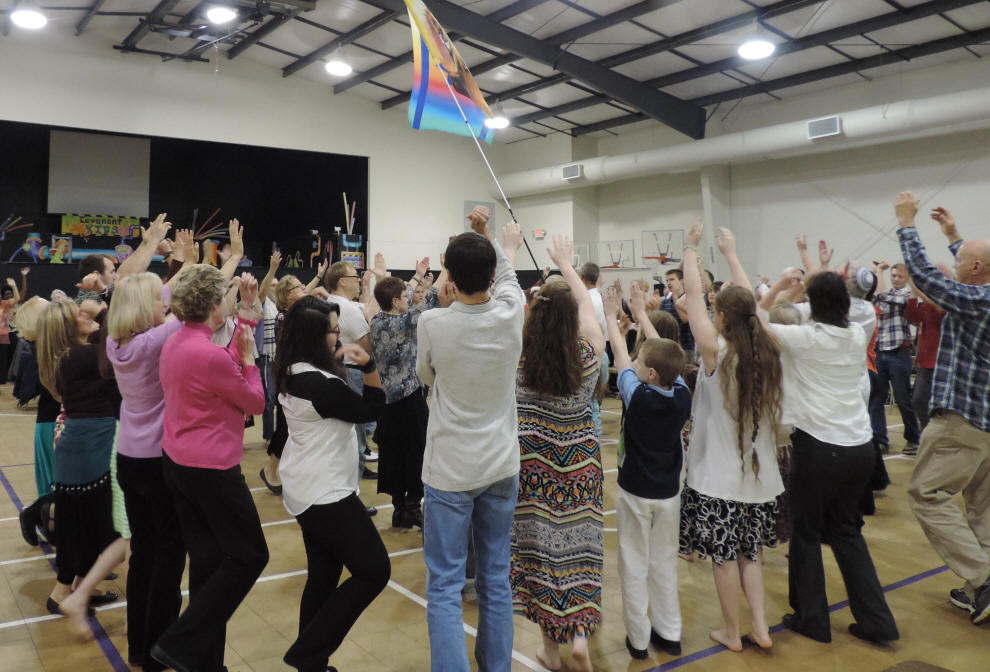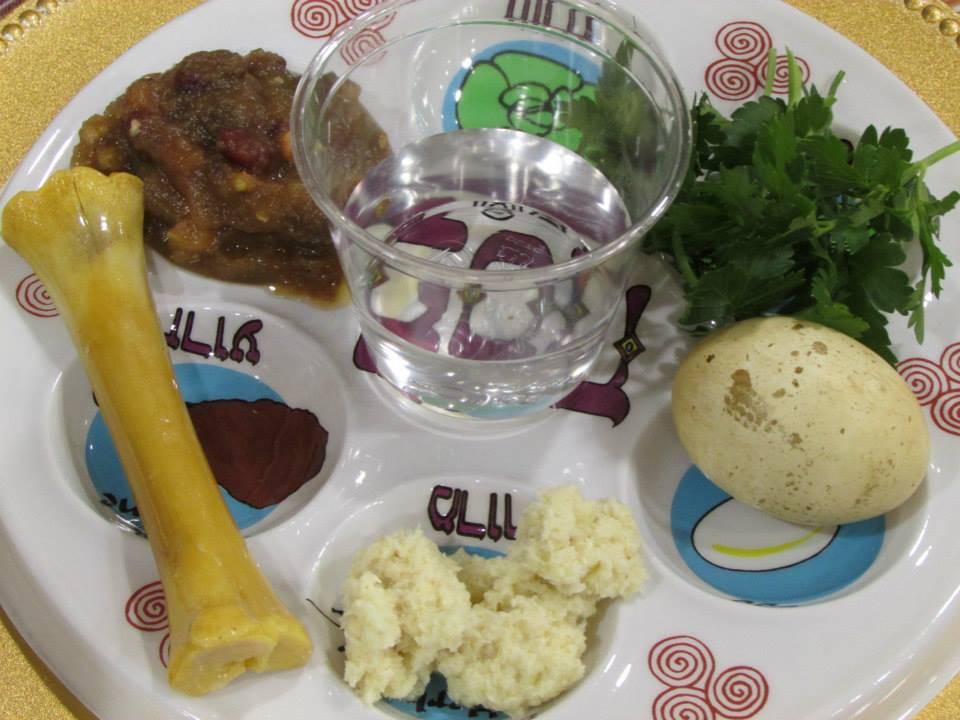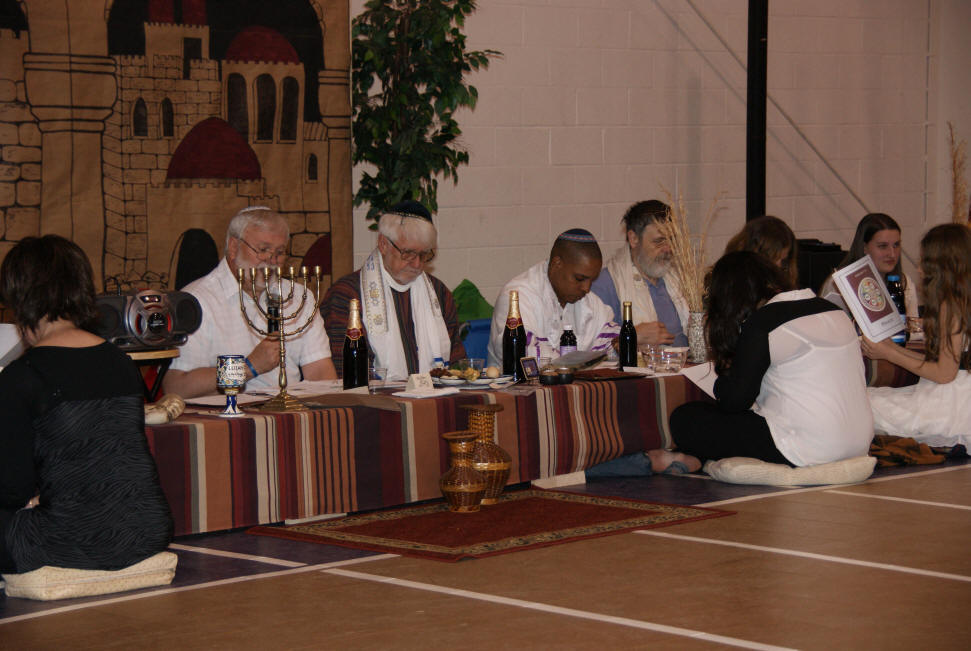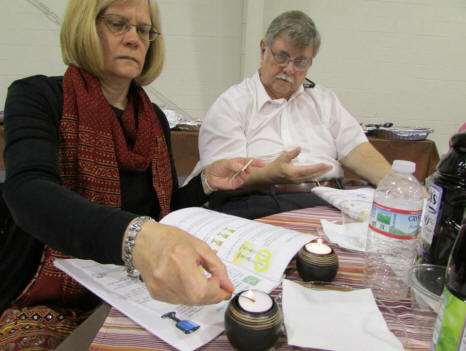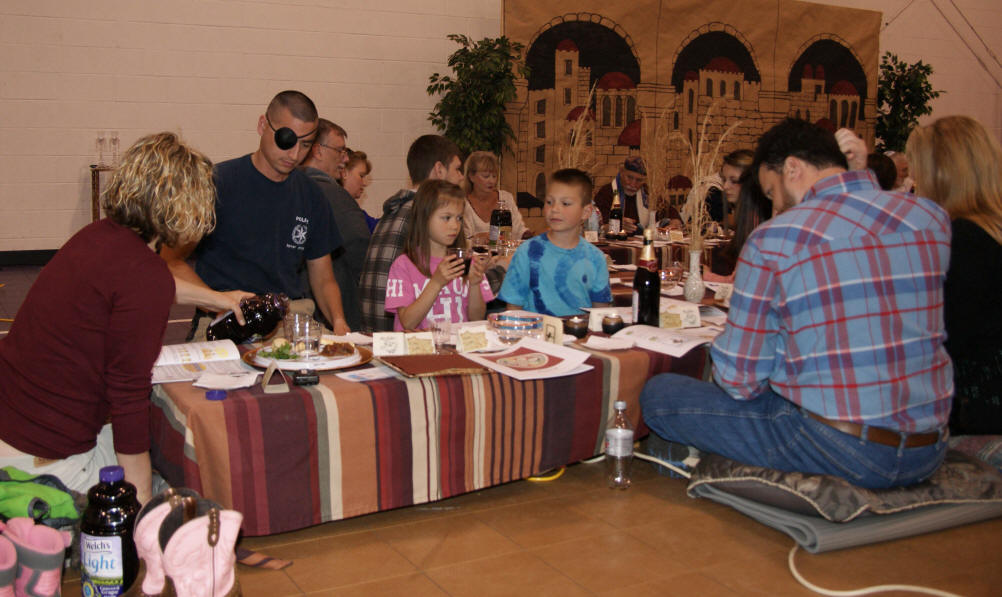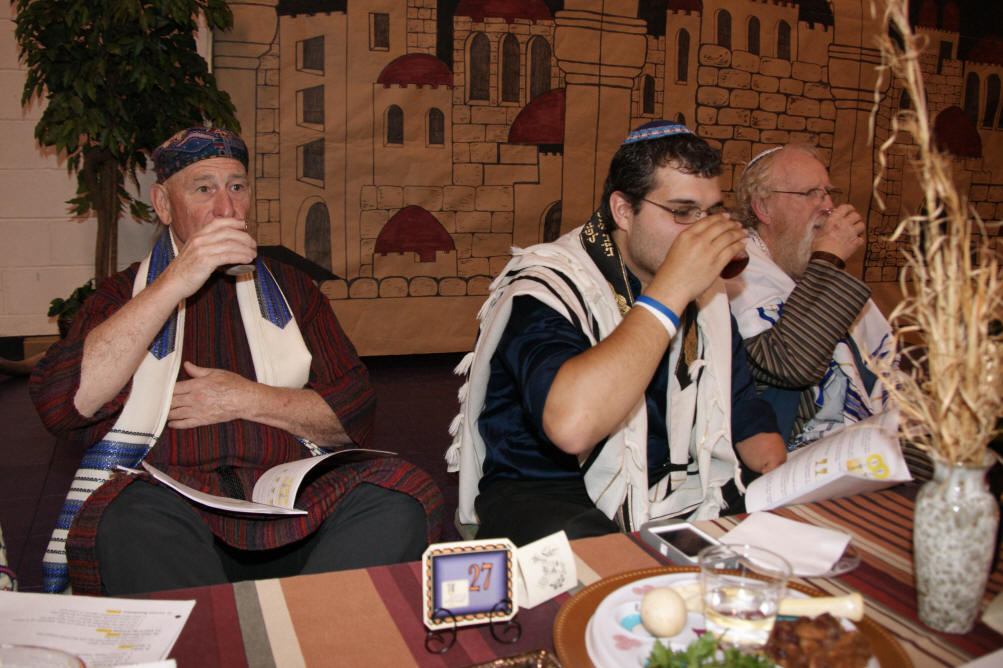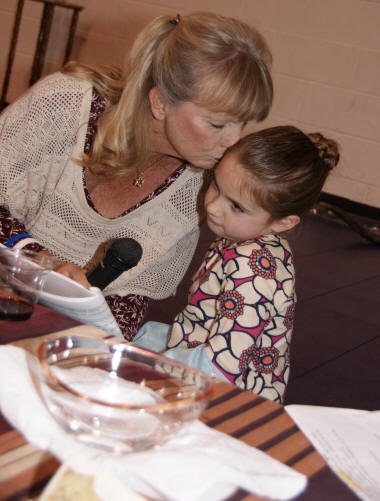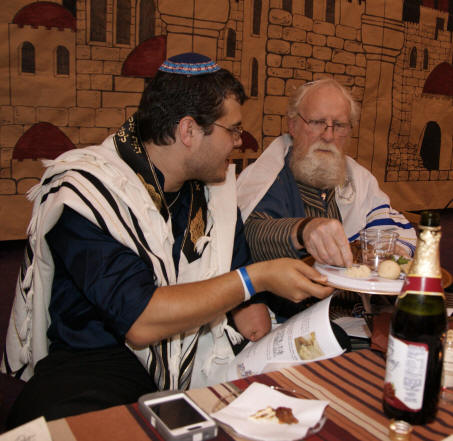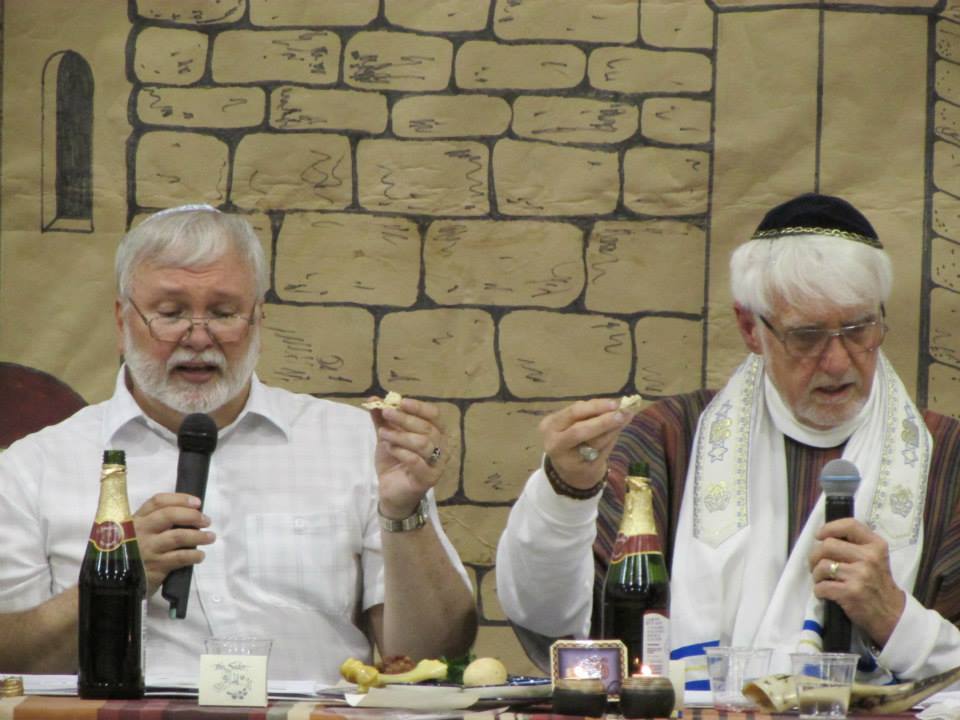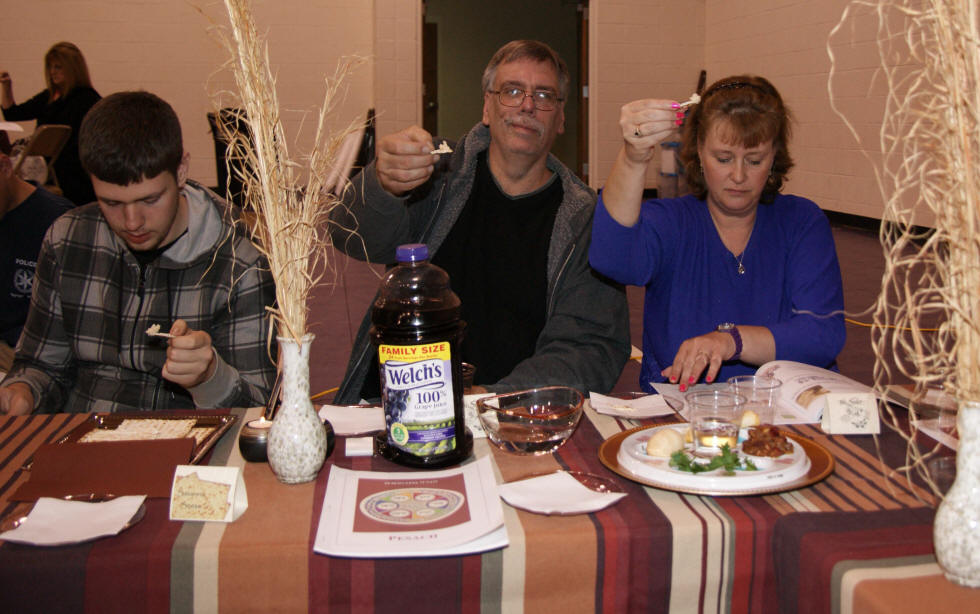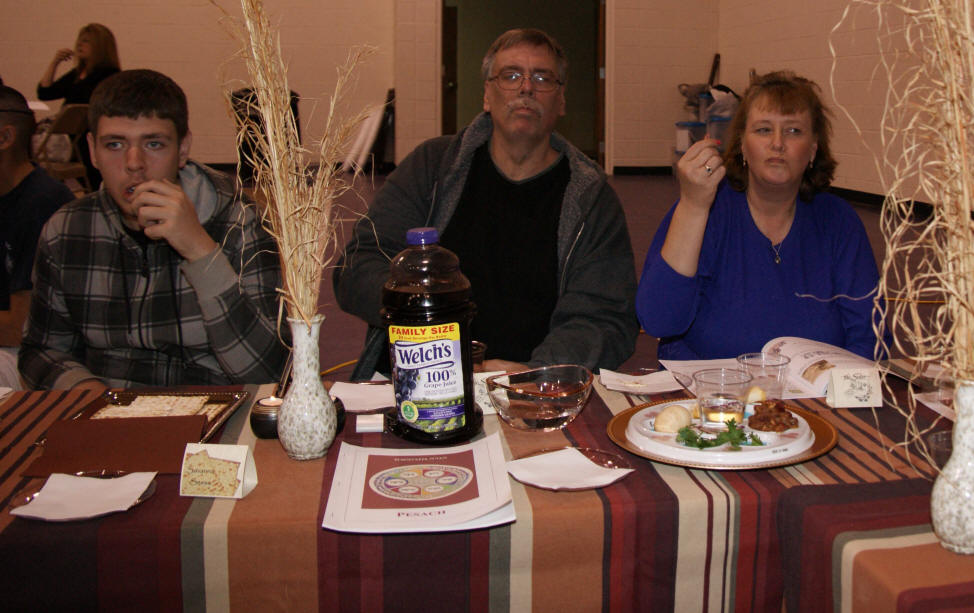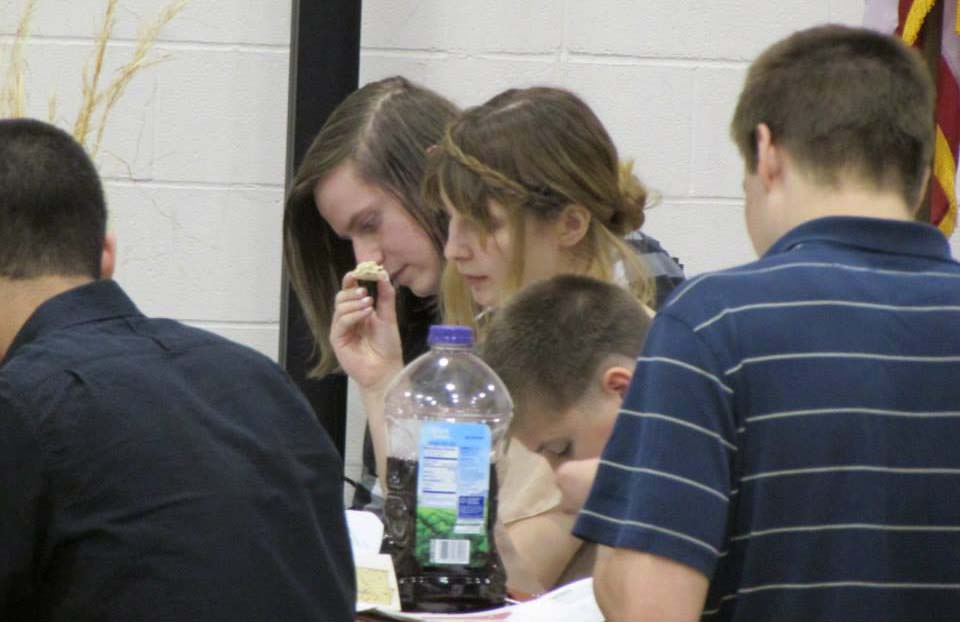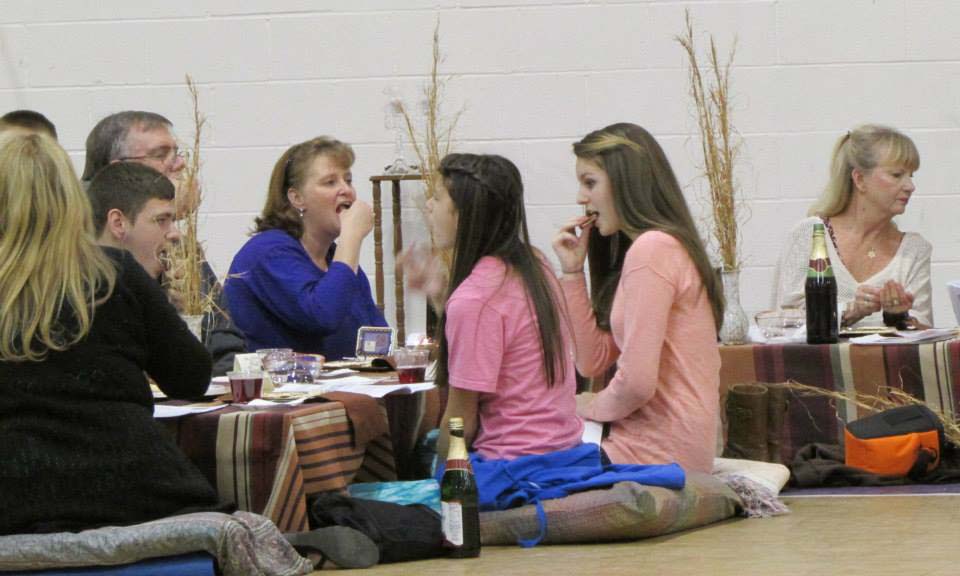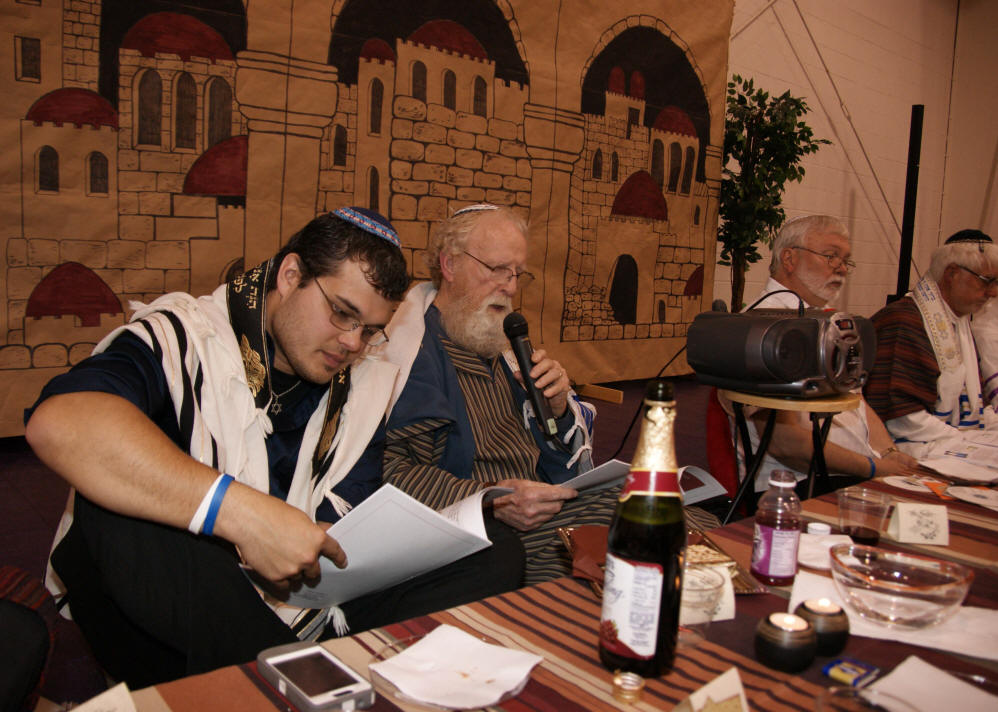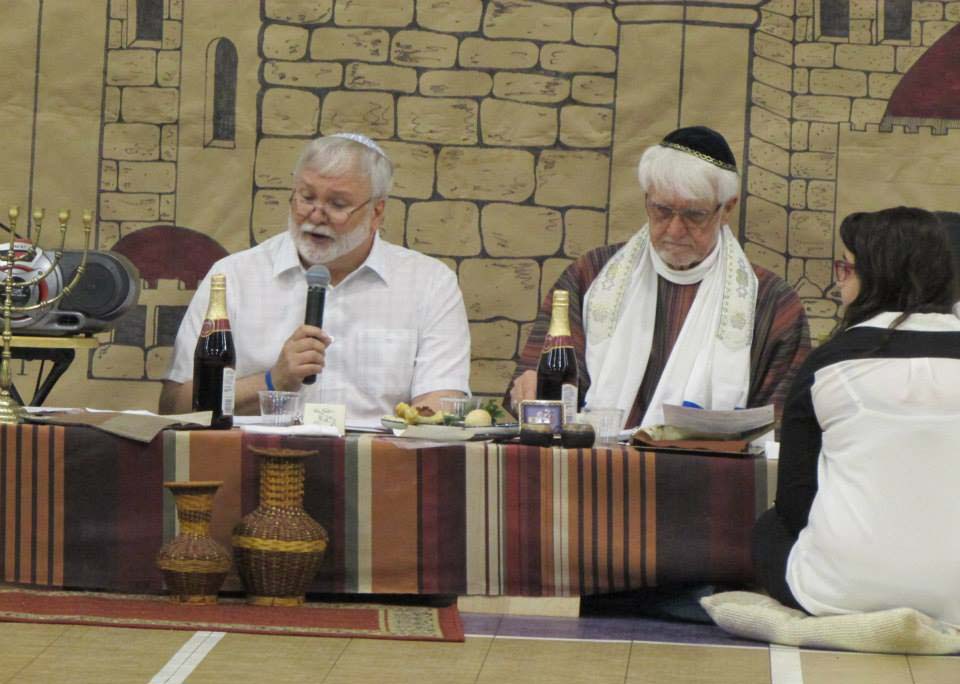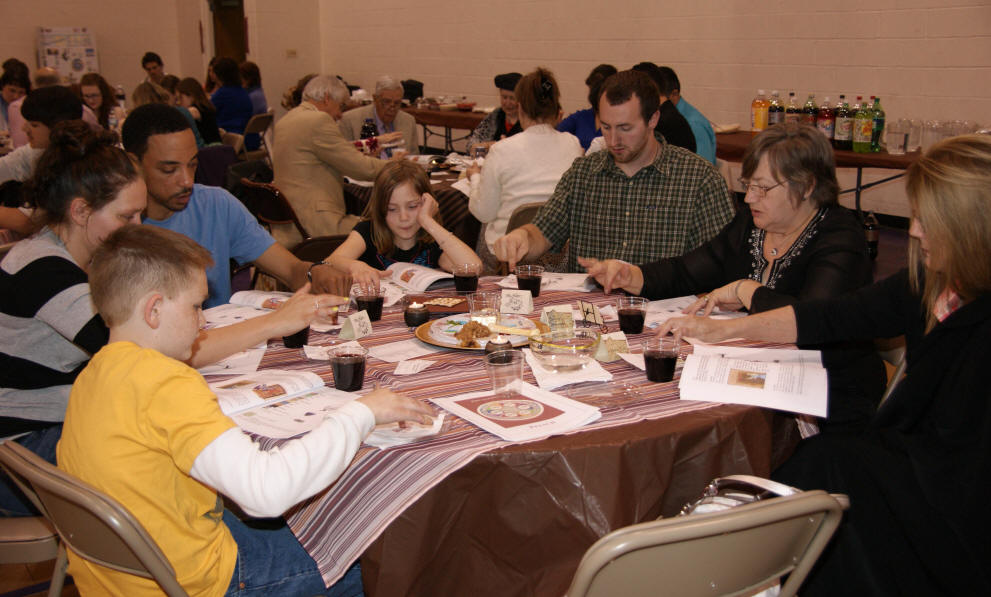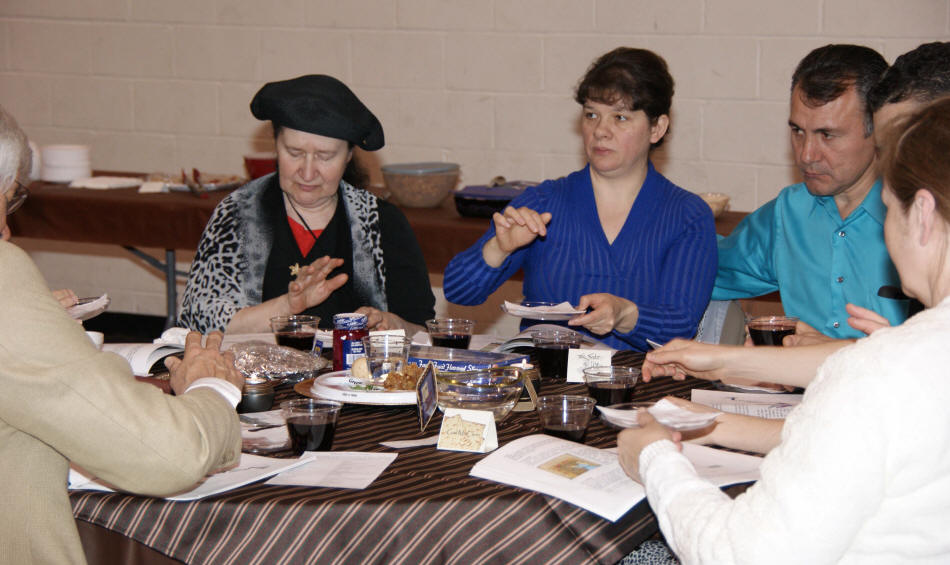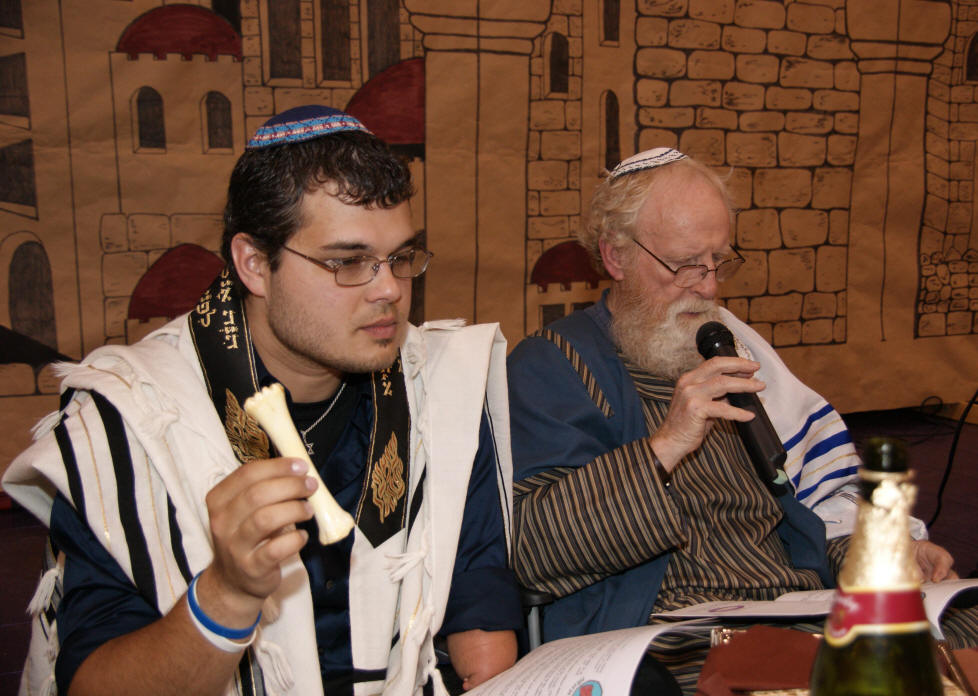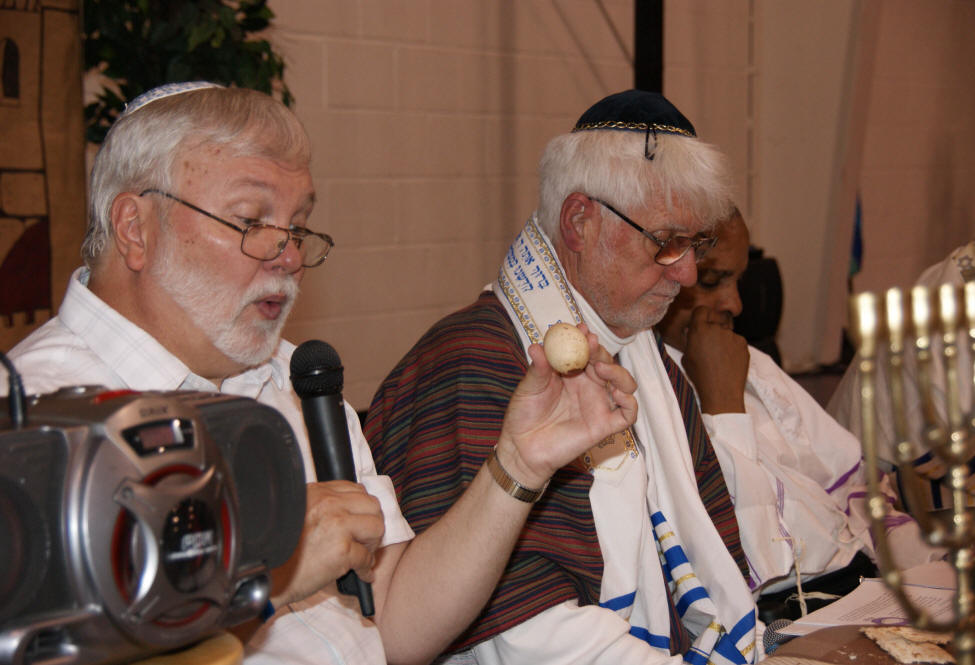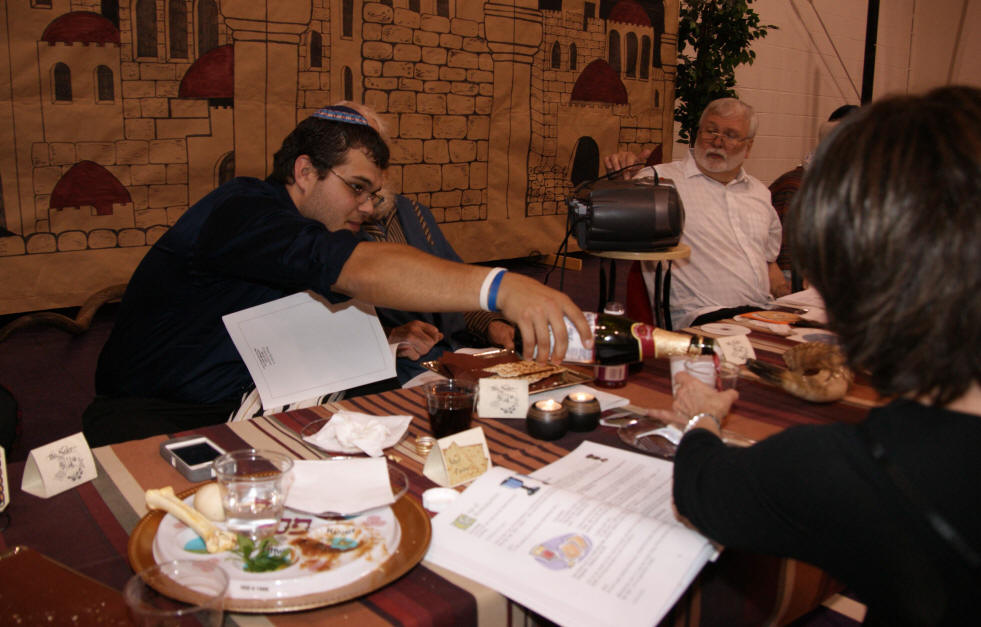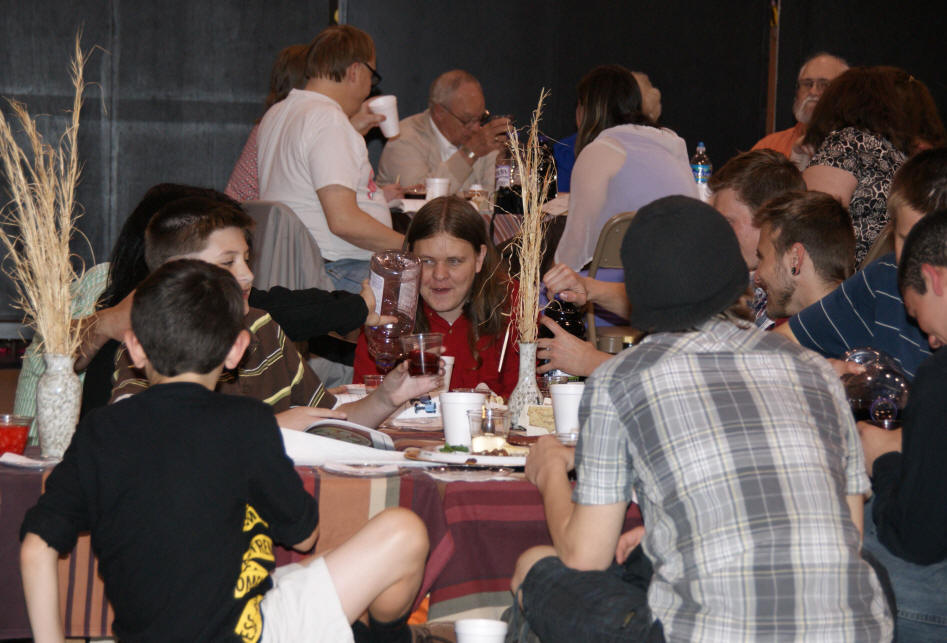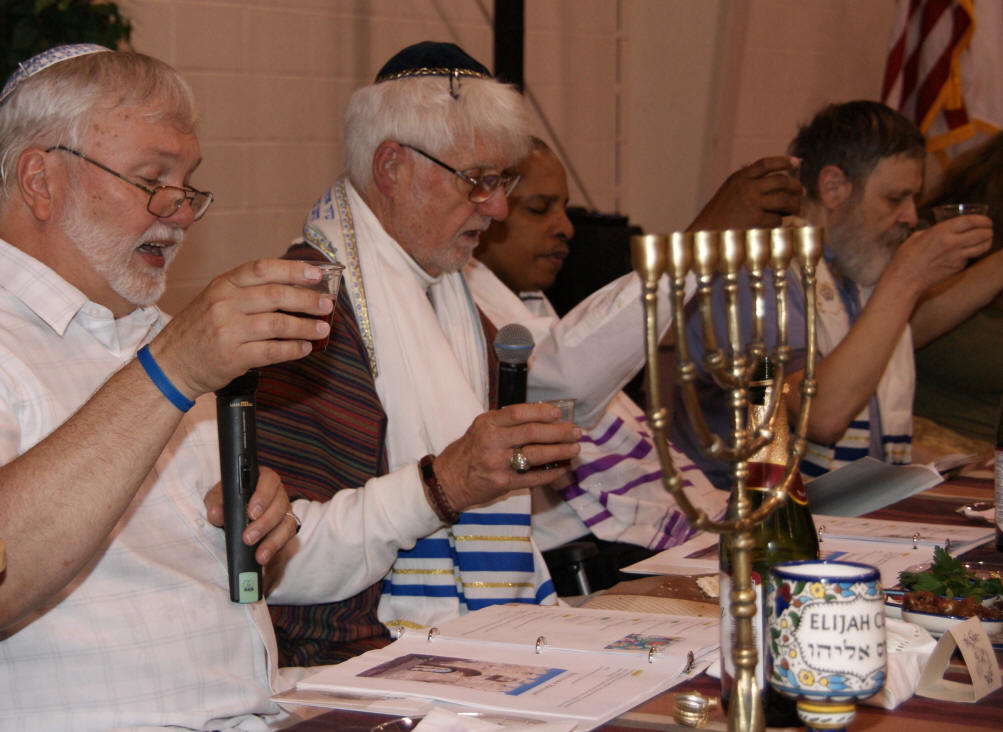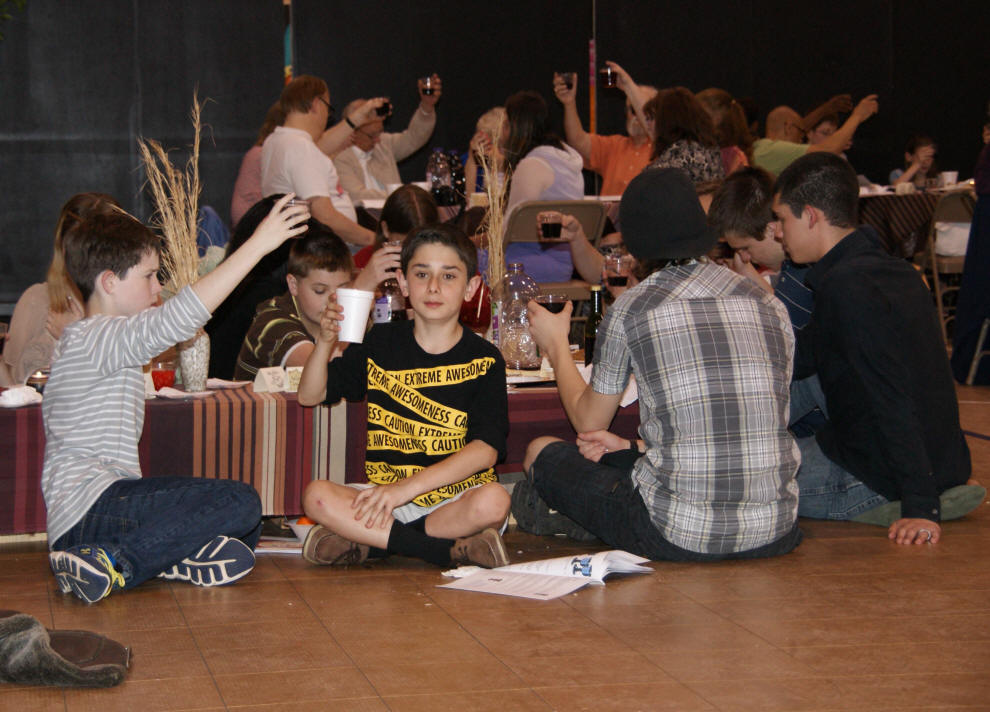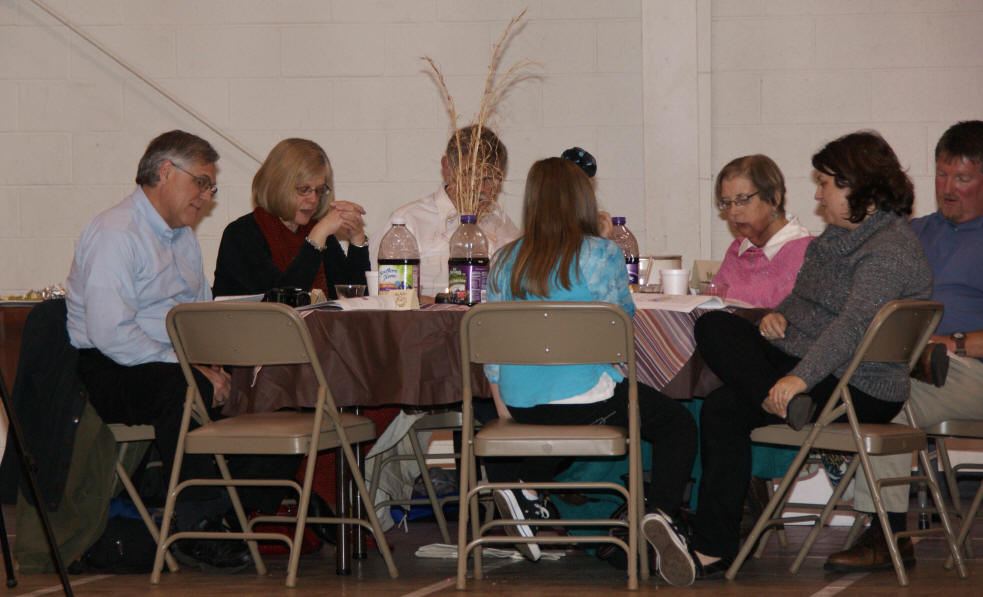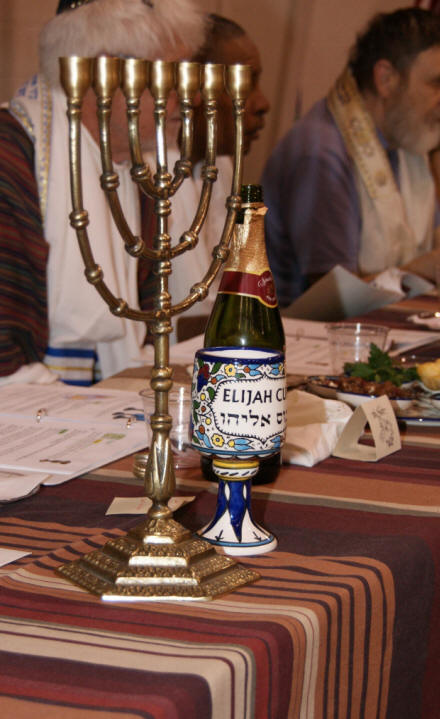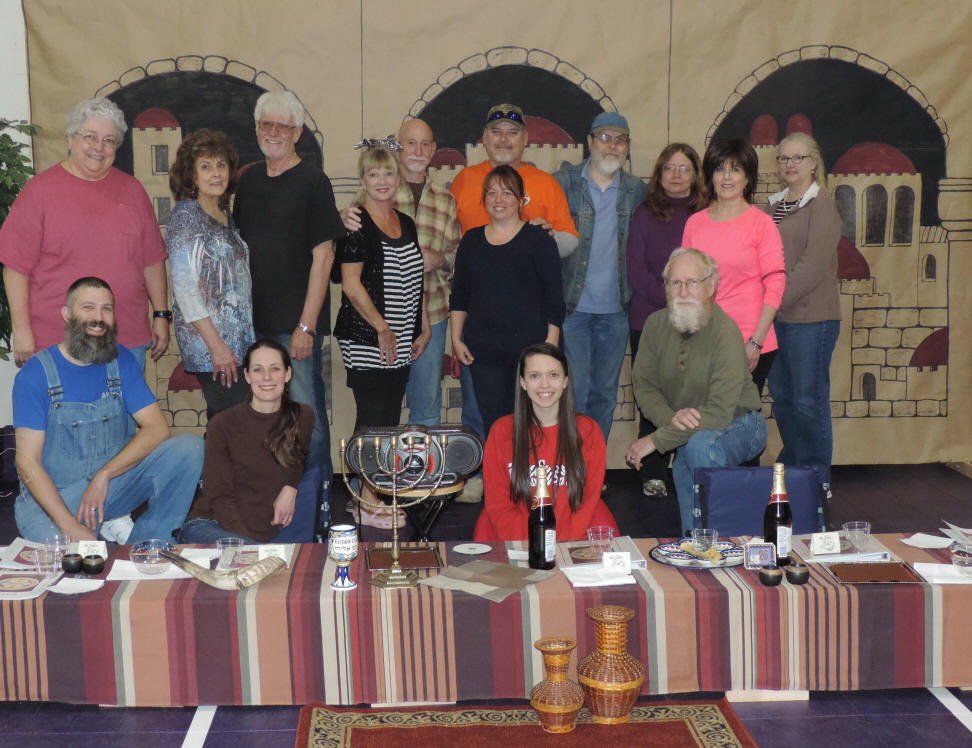Beit Yeshua
Pesach 2014
PESACH
Beit Yeshua
Pesach
Celebrations
2015
Covenant Bible
Church
2014
Covenant Bible
Church
2013
Covenant Bible
Church
2012
Covenant Bible
Church
2011
Covenant Bible
Church
2010
Covenant Bible
Church
2009
Covenant Bible
Church
2008
Covenant Bible
Church
2007
Covenant Bible
Church
2006
The River
2005
Greg & Linda's
Home
2004
Greg & Linda's
Home
2003
Doug & Lynda's
Home
2002
Curtis & Carolyn's
Home
Pesach/Passover 2014 
Pesach/Passover is one of the seven festivals of the Lord mentioned in Leviticus 23. It is the first of the Spring festivals, occurring in March or April each year. In scripture, this date would be Nissan 14.
Pesach is the festival that brings to remembrance the deliverance of the Children of Israel from their slavery in Egypt.Beit Yeshua gathered on Friday, April 18, 2014, to celebrate and observe our 13th annual Pesach/Passover Seder. We met in the Family Life Center at Covenant Bible Church in Lincolnton and had about 225 in attendance. We were honored to have four pastors with us from the neighboring counties as well as leaders from several Messianic/Jewish-Roots ministries.
Andi & Cayla greet guest (in this photo with Alex) as they arrive and inform them where they will be sitting
Guests mingle as they wait for everyone to arrive
Curtis speaks with Pastor Glenn Kerstetter and his family - as well as the Klingbiel family (below)

We had numerous guest associated with Cathy Hargett and HIGHWAY TO ZION who drove from Charlotte
They're always faithful to support the annual Pesach Seder with Beit Yeshua in Lincolnton, NC

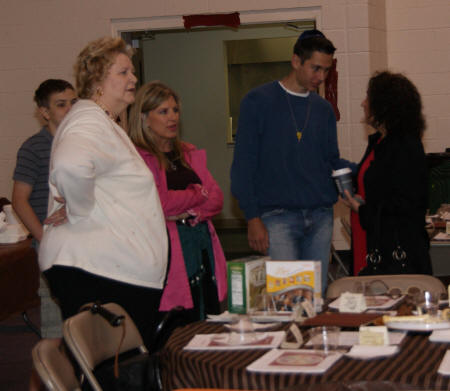
Gloria Cunningham, one of Beit Yeshua's Machol Dancers, drove an hour & a half from the NC mountains
as did old friends & CBU worship leaders Paul & Marian Boyd
Pastor Bill Shupp, from THE RIVER in Lincolnton, always has a group at the annual Seder
Fran Hoover, of HIGHWAY TO ZION, introduces Curtis to Russian Pastor Dimitry Kishko and members from his congregation
Virgil & Diane Pittman traveled the farthest, all the way from Georgia, to attend the Seder
and are sitting here with Jim & Frankie SmithBeit Yeshua's own Jonathan & Andi Lovelace sit with their guests Dillon Beatty, Candice Hopkins and Dale Liser
as well as Alex Childer's guests Don & Thelma AndersonCelia Smith & Janice Stroup chat with Paul & Susan Miles as well as Linda Franklin

Beit Yeshua leadership: Chuck Anthony, Paul Miles & Doug Williams
Shofarot Sounded Shofarot (Ram's Horns) are sounded as the evening begins
Chuck welcomes everyone and introduces pastors and special guests

As always, we had regular and low seating
Cathy Hargett, of HIGHWAY TO ZION, tells everyone about the upcoming "An Evening Honoring Israel"
sponsored by Beit Yeshua, Highway To Zion and Love For His PeopleCurtis introduces the the lady Machol Dancers
Machol Dancers Dance Performance Machol's Janice Stroup, Celia Smith, Myrl Peeler and Gloria Cunningham perform the Israel Folk Dance
"Kadosh" to the song "Kadosh" sung by Paul WilburMyrl lights Pesach festival candles as part of the dance

"KADOSH" - "HOLY" "Kadosh, Kadosh, Kadosh, Adonai, Elohim, Tz-va-ot,"
"Holy, Holy, Holy, Lord, God of Hosts/Almighty"To see the YouTube Video of the entire dance, CLICK HERE Praise, Worship & Israeli Folk Dance Curtis encouraged everyone to participate in Israeli Folk Dance during a short time of Praise & Worship
Leading dancers in a spiraling circle to the dance "Zemer Atik", there were over 50 men, women, teens and children
who immediately joined Curtis and the Machol Dancers as he led them in Beit Yeshua's easiest dances"Step Right, Left, Right, Left, Right, Clap Clap Right, Clap Left ..."
"(Into Center of Circle) Step Right, Snap, Step Left, Snap, (Backing Out of Circle) Step Right, Left, Right Left"
To see the YouTube video of the song "He Shall Reign" and some of the dancing - CLICK HERE Our second song was "Mountains of Israel" by Paul Wilbur and we danced "Od Lo Ahavti Dai" During the second song Mark Pittman and Paul Miles added the flags and another 20 - 25 people joined the dancing
Mark Pittman beams as he waves the Lion of Judah flag
To see the YouTube video of the song "Mountains of Israel" and some of the dancing - Video 1 - CLICK HERE To see the YouTube video of the song "Mountains of Israel" and some of the dancing - Video 2 - CLICK HERE The third and final song during praise and worship was "At Your Name - Yahweh, Yahweh" by Phil Wickham
and everyone danced "Im Hu Pal Nu"The Seder Begins Passover is a story that had been told and retold for thousands of years. It is a story of miraculous transitions - from slavery to freedom, from despair to hope, from darkness to light. Its greatness is the greatness of God. Its timelessness comes from the eternal truth of His involvement with His people. Just as God cared for the children of Israel in ancient times, He cares for all who are His today.
Upon the table is a Seder plate, holding the ceremonial items of Passover. There are bitter herbs, a roasted egg, a sweet apple mixture, parsley, and a bone. Curious things, yet all part of the telling. Let us allow our senses to fully participate, taking in the sights and smells, tasting each ingredient, listening to every word.
Sitting at low tables, Curtis Loftin & Doug Williams (co-leaders of Beit Yeshua) led the Seder
One of Messiah’s last earthly acts was the celebration of the Passover. Gathering His disciples in a small room in Jerusalem, He led them in a Seder. He passed the foods among them. It was there, in the context of this celebration that Yeshua revealed to them the mystery of God’s plan of redemption. He spoke to them of His body and blood. He explained to them that he would have to die.
It was no coincidence that Messiah chose the Passover for the setting of what is now celebrated as communion, the Lord’s Supper. For in the story of the Passover lamb, Yeshua could best communicate the course he would be taking over the confusing hours that were to follow. Here, as we participate together in the Passover Seder, may we experience once again God’s great redemption.
Susan Miles led the ladies as one lady from each table lit Pesach festival candles and said the traditional blessing
Rita Richards rises in the background to light the candles at her tableAs we kindle the festival lights, we pray for the illumination of the Spirit of God to bring great personal meaning to this, our Passover celebration.
Linda Franklin and Arlene Jimison light festival candles
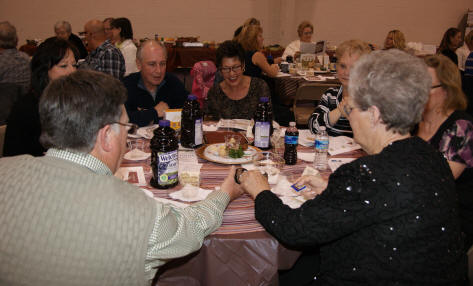
Laurie Martin lights Pesach festival candles
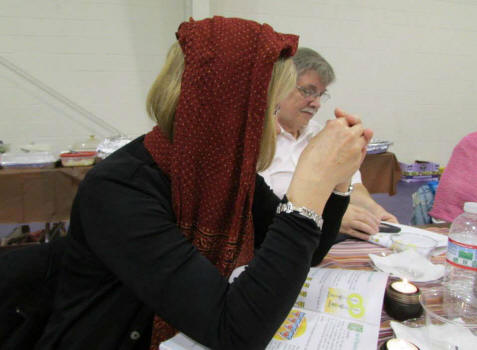
Four cups of wine/juice are drunk during Pesach
Curtis leads the group in the blessing after each one has poured their first cupDave & Chrissy Griffin pour grape juice for their family
Chuck, Alex and Paul drink the first cup
Kara Jane Anthony asks the Four Questions
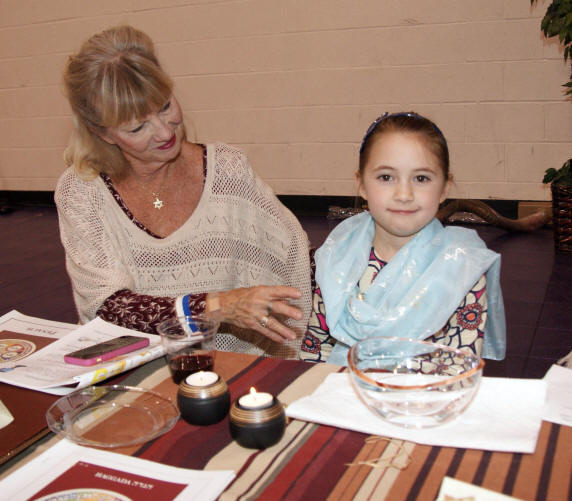
Jane Melnyk passes the water bowel and towels to others at her table during the Hand Washing portion of the Seder
Parsley and Salt Water represent the bitterness of slavery and the tears that the children of Israel shed in Egypt
Doug leads everyone as they dip the parsley in the salt water and then eat the parsleyCurtis removes the middle piece of matzah (unleavened bread) and explains how it is pierced and striped - just like Yeshua

Janice and Kara Jane taste the matzah - as do all the guests On all other nights we eat all kinds of vegetables, but on Passover we eat only maror, bitter herbs.
As sweet as our lives are today, let us still remember how bitter life was for the children of Israel in the land of Egypt.Doug talks about the reason why the maror (horseradish) is eaten and its significance 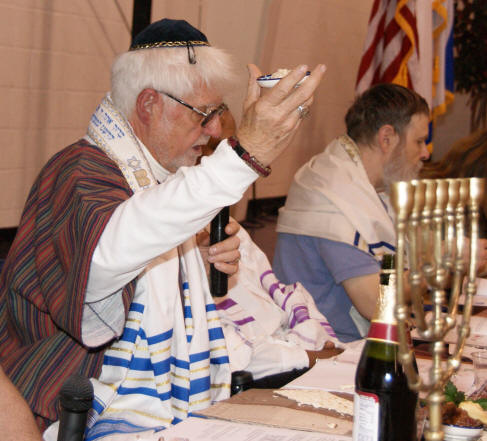
Anthony, Tony & Arlene Jimison scoop some horseradish onto some matzah and eat it We're thankful for families like the Kirbys who join us from year to year for Pesach
(Left to Right) Sarah, Ryan, Levi (just the top of his head), Cindy holding Lilly, and StephenAnna Melnyk with Christian Iwerk On all other nights we do not dip our vegetables even once, but tonight we dip them twice.
We have already dipped the parsley into the salt water. Now we dip the bitter herbs into the kharoset.Curtis, Doug, Wane and Andy eat the charoset and horseradish on matzah Anthony, Tony & Arlene Jimison - as well as Ali & Savanna Seese and Janice Anthony -
eat the charoset and horseradish on matzahPaul, Andy, Chuck and Wane tell the story of Pesach/Passover The Lord had promised the land of Israel to Abraham, Isaac, and Jacob. Yet here were their children in Egypt. The Pharaoh who had come to power feared them. “These foreigners in our midst are prospering and have grown numerous,” he thought. “Suppose they join with our enemies and turn against us!” Pharaoh decided to exert greater control over this people, imposing harsh and bitter slavery upon the Israelites. Still, Yahweh blessed His people in strength and number.
Pharaoh grew more frightened and ordered every baby boy among the Israelites to be drowned in the Nile River. One Israelite couple hid their little boy for three months. Finally, entrusting his future to Yahweh, they set him in a basket and placed him upon the river. His sister, Miriam, watched as he floated downstream. Coming upon the basket, Pharaoh’s daughter took pity on the child and chose to raise him as her own son. She called him Moses, Moshe in Hebrew, meaning “drawn from the water.”
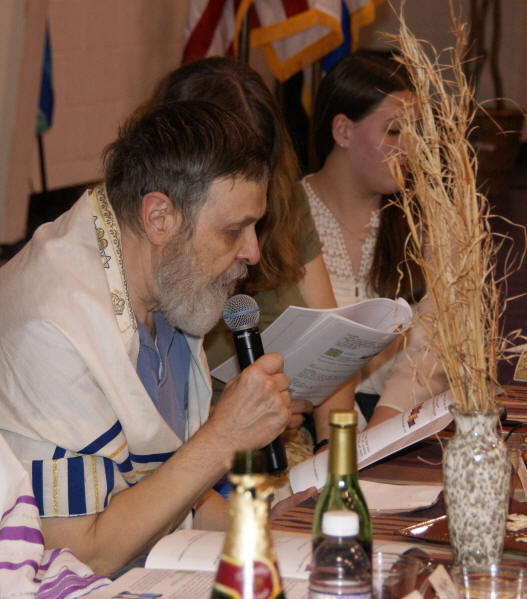
Moshe grew and became aware of the travail of his people. One day, in a rage, he lost control of himself and killed an Egyptian who was beating a Hebrew slave. Fleeing the palace and the eye of Pharaoh, Moshe became a shepherd in the land of Midian, far from the cries of his suffering brothers. The Lord, however, saw the affliction of the children of Israel and heard their groaning. He would raise up a deliverer to lead them out of bondage. It was then that He appeared to Moshe in the midst of a bush that burned with fire, yet was not consumed. Moshe drew close and listened as Yahweh commissioned him to go to Pharaoh. Fearful and reluctant, still Moshe agreed to bring Yahweh’s message to the king of Egypt, “Let my people go!”
The Second Cup of Wine/Juice - The Cup of Plagues Yahweh sent plagues, one by one, yet with each plague, Pharaoh hardened his heart. The Egyptians became afflicted with discomfort and disease. Still, Pharaoh would not relent. With the tenth and most awful plague, Yahweh pierced through the hardness of Pharaoh’s impenetrable heart.
Let us fill our cups a second time. A full cup is a symbol of joy and indeed on this occasion we are filled with joy at Yahweh’s mighty deliverance. But let us also remember the great cost at which redemption was purchased. Lives were sacrificed to bring about the release of Yahweh’s people from the slavery of Egypt. But a far greater price purchased our redemption from the slavery of sin – the death of Messiah Yeshua.
As we recite each plague three times, let us dip a finger into the cup allowing a drop of liquid to fall,
reducing the fullness of our cup of joy this night.Josh Self and Beverly Dalrymple, with additional family and friends, drip grape juice onto their napkin Blood, Frogs, Lice, Beasts, Cattle Disease, Boils, Hail, Locusts, Darkness, Death of the Firstborn
The Seese family - (Left to Right) - Savanna, Ali, Beth and Brad 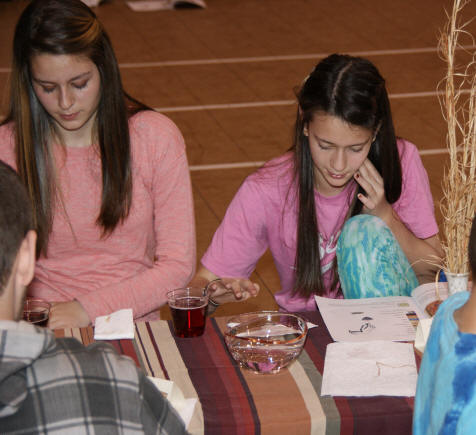
Zoya Parker, in black, with the other Russians from Charlotte This roasted shankbone (below) represents the lamb whose blood marked the houses of the children of Israel, signifying their obedience to Yahweh’s command. Since the Temple in Jerusalem no longer stands, lamb is not usually eaten at Passover. This shankbone remains to remind us of the sacrificial Pesach lamb.
The shankbone of a lamb is also on each Seder plate The roasted egg reminds us of the daily sacrifices which were to be offered from the flock and the herd. An egg, due to its shape, cannot stand on its end without help. From this we are reminded that the Jews needed help from Yahweh to stand up against Pharaoh.
Curtis lifts up the egg from the Seder plate and explains its significance We pause for the Seder meal ... After the Seder meal, everyone drinks the third cup of wine/juice This third cup of wine is called the Cup of Redemption, symbolizing the blood of the Passover lamb. It was the cup “after supper,” with which Messiah Yeshua identified Himself. Just as the blood of the lamb brought salvation in Egypt, so Messiah’s atoning death can bring salvation to all who believe.
The afikomen which has been hidden is redeemed It is time for us to share the afikomen, the dessert, the final food eaten at Passover. It is shared as the Passover lamb was shared from the time of the exodus until the destruction of the Temple. It is said that the taste of the afikomen should linger in our mouths.
Mary Melnyk, and the other children, go to the door to check and see if the prophet Elijah has come to our Seder The fourth cup of wine/juice ... ... is lifted up and blessed Baruch atah Adonai Eloheynu, Melech ha’olam, borey pri hagafen.
Blessed are you, O Lord our God, King of the universe, who created the fruit of the vine. Let us gratefully drink.Steve & Laurie Martin, David Greene, Carolee Daroux, Mike & Stephaine Morris Our Passover Seder is now complete, just as our redemption is forever complete.
Let us conclude with the traditional wish that we may celebrate Passover next year in Jerusalem.La’sha-na ha-ba’ah bi Yerushalayim
Next Year In JerusalemTHANKS A special thanks to these folks who worked behind the scenes to set-up before and clean-up after the 2014 Seder
Without the help of all of these we wouldn't be able to provide our annual Pesach Seder & CelebrationSet-Up Crew
Carolyn Loftin, Lynda & Doug Williams, Janice & Chuck Anthony, James & Jennifer Hays, Andy & Jane Melnyk, Myrl Peeler, Christi Rhykus, Jonathan & Andi Lovelace, Cayla Lovelace and Paul Miles [Not Pictured: Susan Miles, Mark Pittman and Curtis Loftin]A very special thank, also, to those who help with clean up at the end of the Seder.
We never get a photo of these folks because everyone is working, and many times it's visitors who are with us for the very first time.Thanks to David Parsons and Carolyn Loftin for sound, as well as computer and overhead projection during praise & worship Thanks also to Duke Peeler, Steve Martin, Paul Miles, Andi Lovelace and Curtis Loftin who provided the photos
for use on the Beit Yeshua websiteContact me to join us for the Seder next year

